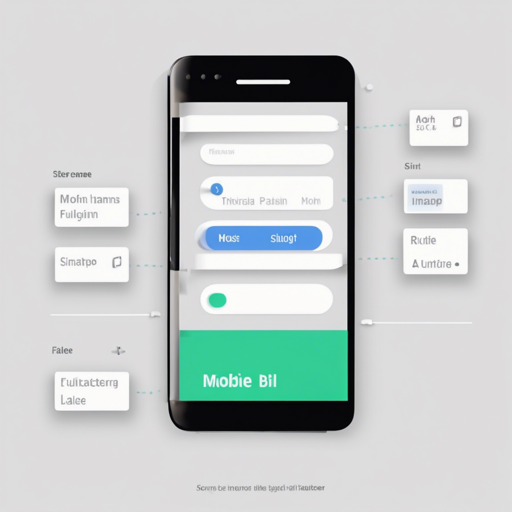In today’s mobile-first world, user experience is crucial, especially when dealing with modals. Regular Bootstrap modals can create additional scrolling issues, particularly on mobile devices. The Bootstrap Mobile FullScreen Modal offers a simple, CSS-only solution to this problem, providing a more native experience similar to ZURB Foundation modals.
What is a FullScreen Modal?
A FullScreen Modal expands to take up the entire screen on mobile devices. This eliminates unnecessary vertical scrolling, allowing users to access content quickly and efficiently. You can see the difference in the user experience between a regular modal and a full-screen modal:
How to Use the FullScreen Modal
Implementing the FullScreen Modal is simple and can be done through either GitHub or npm with the package name bootstrap4-fs-modal. Below are the steps to get you started:
Step 1: Include the CSS
First, include the CSS file from the dist folder in your HTML:
<link href="dist/css/bootstrap-fs-modal.min.css" rel="stylesheet">Step 2: Adding Styles to Modals
You have two approaches to activate the full-screen styles:
- Add the class
modal-fullscreendirectly to the modals you want to apply - Add the class
bootstrap-fs-modalto the container element which will style all modals inside
Step 3: Adjust the Modal Footer
If your modal has large text buttons, consider using a fixed bottom modal footer by applying the modal-fullscreen-bottom-footer class to the modal or its container.
Example Implementation
Here’s an example of how to implement the modal in your HTML:
<div class="modal fade modal-fullscreen">
...
</div>
<div class="bootstrap-fs-modal">
<div class="modal fade">
...
</div>
</div>Button Customization
The plugin modifies the modal footer by placing it at the top and ensuring uniform size and alignment for icons from libraries such as Font Awesome and Google Material. Here’s an example of how the buttons can be structured:
<div class="modal-footer">
<button type="button" class="btn btn-secondary" data-dismiss="modal">Close</button>
<button type="button" id="btnTestRefreshSmall" class="btn btn-default">
<span class="d-none d-md-inline">Reload</span>
<span class="d-md-none">Reload</span>
</button>
<button type="button" class="btn btn-default">
<span class="d-none d-md-inline">Reload</span>
<i class="d-md-none fa fa-refresh fa-fw"></i>
</button>
<button type="button" class="btn btn-default">
<span class="d-none d-md-inline">Details</span>
<i class="d-md-none material-icons">info</i>
</button>
</div>Troubleshooting
If you encounter issues while implementing the FullScreen Modal, consider the following troubleshooting tips:
- Make sure the CSS file path is correct and properly linked.
- Check for any conflicting CSS rules that might interfere with the modal styling.
- Ensure you are using the correct classes as specified in this guide.
- If buttons do not appear or behave as expected, verify that you haven’t hidden them via the
data-dismissattribute.
For more insights, updates, or to collaborate on AI development projects, stay connected with fxis.ai.
Conclusion
Integrating the Bootstrap Mobile FullScreen Modal into your project not only enhances the user experience on mobile devices but also makes it easy to manage modal content without clutter. By following the steps outlined in this article, you can elevate your web application’s functionality and user interface.
At fxis.ai, we believe that such advancements are crucial for the future of AI, as they enable more comprehensive and effective solutions. Our team is continually exploring new methodologies to push the envelope in artificial intelligence, ensuring that our clients benefit from the latest technological innovations.

